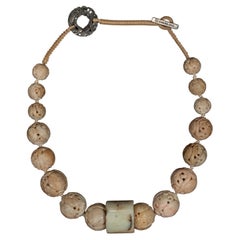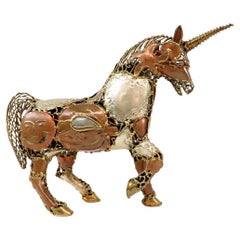Fumiko Ukai
20th Century American Japonisme Tribal Art
Stone
People Also Browsed
Vintage 1960s Mexican Brutalist Collectible Jewelry
Brass
Vintage 1980s Mexican Brutalist Figurative Sculptures
Brass
20th Century Mexican Modern Tribal Art
Brass, Bronze
Mid-20th Century Mexican Brutalist Decorative Boxes
Brass
Vintage 1970s Mexican Mid-Century Modern Wall-mounted Sculptures
Bronze
Mid-20th Century Abstract Sculptures
Brass, Copper
Mid-20th Century Mexican Brutalist Decorative Boxes
Bronze
Vintage 1970s Mexican Brutalist Collectible Jewelry
Bronze
Vintage 1980s Mexican Brutalist Collectible Jewelry
Bronze
Vintage 1970s Mexican Mid-Century Modern Collectible Jewelry
Bronze
20th Century Mexican Abstract Sculptures
Steel
Vintage 1960s Mexican Mid-Century Modern Figurative Sculptures
Metal
Vintage 1970s Mexican Mid-Century Modern Figurative Sculptures
Bronze
Vintage 1970s Mexican Mid-Century Modern Figurative Sculptures
Bronze, Steel
Vintage 1970s Mexican Brutalist Vases
Bronze
Vintage 1970s Animal Sculptures
Brass
A Close Look at japonisme Furniture
In the late 19th and early 20th century, France developed an enduring passion for Japanese aesthetics and craftsmanship. Not only did this interpretation of Japanese culture — which became known as Japonisme — infuse fresh energy into French art and design, but it also radically transformed how Europeans, and subsequently the world, would come to understand visual culture.
Until 1853, Japan had been closely guarded against foreign visitors for over two centuries. However, American Commodore Matthew C. Perry sailed into Japan that year and initiated the first of its treaties with the United States and Europe, thereby opening its borders and giving the West its first-ever look at Japanese design.
For the next few decades, taken with Japonisme, sophisticated collectors in Paris, New York and elsewhere gorged themselves on lacquered screens, celadon ceramics and netsuke ornaments, along with artworks depicting various aspects of Japanese life. The East Asian country’s influence on Europe, particularly France, contributed to one of the most creatively prosperous periods in history, leaving an imprint on the Impressionist, Art Nouveau and Art Deco movements, and inspiring artists like Edgar Degas, Mary Cassatt, Vincent van Gogh as well as luxury houses such as Louis Vuitton and Hermès. Japonisme emerged at the time when the ornate Renaissance Revival style was the most prominent mode of decorating in Europe, and Japanese aesthetics seemed strikingly modern and elegant in comparison.
In addition to everyday practical objects from Japan, such as vases, tableware and decorative boxes, Japanese art, especially Japanese woodblock prints by masters of the ukiyo-e school, caught the eye of many artists — particularly those in the Art Nouveau poster community in 1880s Paris. The luscious organic colors associated with traditional Japanese design, motifs like cherry blossoms and carp and the vivid patterns found in woodblock prints, silks and more were adopted and appropriated by painters as well as ceramicists and those working in other fields of the decorative arts. Today, demand for Japanese lacquerware — furniture, trays, writing boxes, screens, incense burners — from the Edo period (1615–1868) and the late 19th century continues to be very strong among collectors.
Find a collection of antique Japonisme furniture and decorative objects on 1stDibs.
Finding the Right folk-art for You
Folk art refers to a genre of art that shares the creator’s traditions, offering not just an artistic display but an opportunity to learn about a culture. Vintage, new and antique folk art typically reflects a heritage or location. It can include utilitarian objects and handmade art as diverse as weather vanes, portraiture and paintings, carnival art, quilts and duck decoys.
American folk art is frequently valued because of the traditional skills involved, like weaving, hand-carving wood and even stonework. Many folk artists are self-taught, while some train as apprentices within their community. By using available materials and taking a personal approach to their creations, artists ensure each piece is unique and conveys a story. Native American folk art includes functional objects reflecting their heritage, such as baskets, textiles and wooden pieces.
During the Great Depression, artistic materials in America were hard to come by, so artisans used discarded wood from cigar boxes and shipping crates to make highly stylized, notched pieces — most often picture frames and boxes — that are today sought after by collectors. This folk art style is called tramp art and was popular from roughly 1870 until the 1940s.
Folk art brings vibrant culture and traditions into your home. Browse an extensive collection of folk art on 1stDibs.


